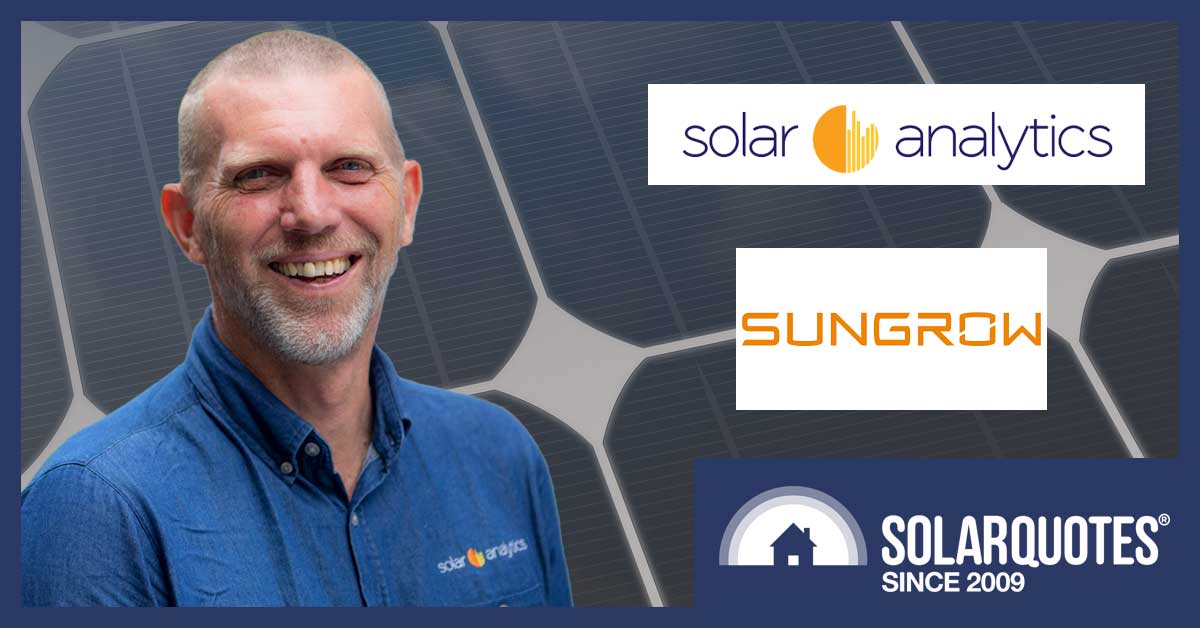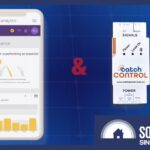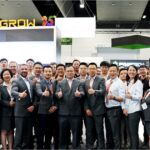Solar Analytics’ Nigel Morris Talks Sungrow, Distributed Control & Interoperability

When I asked Solar Analytics’ head of business development Nigel Morris for a chat about the company’s partnership with Sungrow, I didn’t expect to end up in a conversation about system interoperability and standardisation.
But that’s where we ended up, because interoperability is one of the reasons Sungrow is the first inverter vendor Solar Analytics has partnered with in a South Australian pilot announced in late September 2020.
Morris told me Solar Analytics has long hoped it could directly manage customers’ inverters, and that desire was given a sharp impetus by the South Australian Government’s regulations that require relevant agents (RA) to respond to AEMO directions within 15 minutes.
Solar Analytics wanted its RA service to offer better value than merely curtailing a customer’s output on AEMO’s say-so, and while the company was deciding how to address its entry into the RA market, its partnership with Sungrow was in its early stages.
In its RA role, Morris said, Solar Analytics had a range of options.
“There were a number of options available to us – a smart meter, DRM [demand response management – SolarQuotes], a watt-watcher device. There were a number of things we could do to solve some of the problems.”
“Our partnership with Sungrow was starting – we realised if we could do this with Sungrow, we could solve everything better, because we might not have to switch customer systems off.”
The Sungrow partnership lets Solar Analytics implement a dynamic export control strategy, he said. That’s far better than simply curtailing customer solar systems.
“Let’s say AEMO says ‘curtail in these areas’. Turning the entire system off … is not good value. It’s very brutal – if you turn 20,000 systems off, that’s a pretty brutal impact, it can cause the network to collapse because it’s such a rapid shift.”
With data from Sungrow inverters integrated into its systems, Solar Analytics can make more sophisticated decisions.
“Before I throttle or turn off a system, I can ask ‘is the site consuming all the energy coming from its solar?’ If it is, there’s no net benefit from turning the system off. It’s better to limit the output to what the site is using.”
“We can do that dynamically pretty much in real time – we can follow the load.”
At the same time as taking pressure off the network, the customer’s savings are protected, which is “vastly superior to a crude switch”. And the Sungrow system supports South Australia’s dynamic export control requirements that come into play from July 2021.
Interoperability
What’s this got to do with interoperability?
Solar Analytics has plans in place to integrate more inverters into its systems, but right now, it’s a lot of effort.
“Out of all the inverter partners we were talking to, about doing inverter integration, they were the most advanced, the most willing to get excited, and to make changes.”
Morris said that as Australia’s renewable energy market evolves, companies like Solar Analytics will want to control more and more different end systems – solar inverters, EV chargers, battery chargers, “all manner of hardware, devices, and programs”.
And right now, vendors are completely unready for that world. Solar Analytics has signed agreements with other inverter vendors, Morris said, with testing happening now.
“There’s a fair bit of testing to confirm that the APIs work as you expect, then you have to build it all out and get the systems to talk to each other.”
For example, Solar Analytics has worked on devices that support the Modbus industrial control communication protocol. Even though Modbus is truly ancient (it was first published in 1979), vendors can’t resist the temptation to make their own changes.
And that’s replicated all over the industry, Morris said. At the monitoring and communications level, there’s no standardisation: there’s no common API for monitoring and controlling different inverters.
“At least in the case of Sungrow, here’s a manufacturer that’s embraced the API – they’re willing to be open, to give control, follow standards to address the interoperability issues.
“Some of the big brand names segregate their monitoring API from the control API and they don’t give access to the control API to anybody. So they might make a change to how an inverter behaves remotely – but they don’t do that openly.
“So you have a whole business philosophy that’s structured around those being segregated.”
Openness is a big lesson for industry trying to build “Grid 2.0”, and the vast majority of vendors aren’t ready for it. And while there are “always hacks or workarounds or widgets, but that’s not what we want”.
Original Source: https://www.solarquotes.com.au/blog/solar-analytics-sungrow/


















